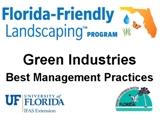
by Matthew Orwat | Mar 4, 2014
 In 2014, a new law took effect requiring all commercial fertilizer applicators (for hire) to have a license. This law was passed in 2009 and took effect on January 1 of this year. A requirement that must be completed to obtain this license is to successfully complete a Green Industries Best Management Practices (GI-BMP) training class. One option to fulfill this requirement is to enroll in a GI-BMP class at the local county extension office. This training is provided by UF IFAS extension at various extension offices across Florida in both English and Spanish.
In 2014, a new law took effect requiring all commercial fertilizer applicators (for hire) to have a license. This law was passed in 2009 and took effect on January 1 of this year. A requirement that must be completed to obtain this license is to successfully complete a Green Industries Best Management Practices (GI-BMP) training class. One option to fulfill this requirement is to enroll in a GI-BMP class at the local county extension office. This training is provided by UF IFAS extension at various extension offices across Florida in both English and Spanish.
These classes instruct green industry professionals in techniques of fertilizer, pesticide and irrigation application that help reduce and prevent pollution caused by runoff and leaching. Runoff and leaching is usually driven by rainfall and creates non-point source pollution. By learning how to implement the safest methods of fertilizer and pesticide application into their daily work, green industry professionals can do their part in the effort to maintain and improve Florida’s water quality and environment.
After receiving a certificate of completion, a person must pay $25 and apply to receive a limited certification for urban landscape commercial fertilizer application. A person possessing such a certification is not subject to additional local testing. The certification expires 4 years after the date of issuance and needs to be renewed at that time. Florida City and County employees that apply fertilizer as part of their job duties do not need to obtain the license to be in compliance with the new fertilizer rule, but they must complete the training and obtain a certificate of completion from the GI-BMP program.
[important]The Next GI-BMP class will be held Tuesday, March 11 at the UF IFAS Washington County Extension Office in Chipley Florida. This office is located at 1424 Jackson Ave (also US HWY 90) Suite A. It begins at 8am central time in the East Wing conference room. To register, contact Matthew Orwat or Cynthia Jackley at 850-638-6180 or mjorwat@ufl.edu Cost is $20.00 and lunch is provided.[/important]
The GI-BMP program has FDACS approval for 2 Core CEUs and 2 additional CEUs for the following licenses:
- Private Applicator – Agriculture
- Ornamental & Turf
- Limited Lawn & Ornamental
- Limited Landscape Maintenance
- Commercial Lawn and Ornamental
- Limited Commercial Fertilizer Applicators
- (2) Limited Urban Fertilizer credit hours
Article by Matthew Orwat and Sheila Dunning
by Les Harrison | Mar 4, 2014
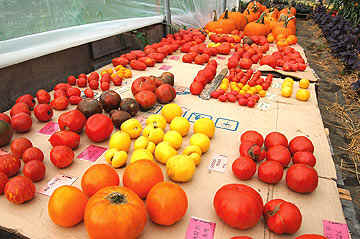
An assortment of Heirloom Tomatoes. Image Credit Dan Culbert
Thursday night’s temperatures have confirmed the winter of 2014 is not over. This year’s cold days and freezing nights have taken a toll on power bills, auto batteries, and the mosquitoes.
Still there is indication that spring will soon be coming. The most tangible evidence is arriving in north Florida mailboxes almost daily.
Garden catalogs from every part of the nation are finding their way into many area homes. Their pages promise the buyer the potential for legendary success and the envy of their friends and neighbors.
After all, who can resist the full color beauty of giant flowers, large luscious fruit and vegetables which are sure to win a prize at the fair? There is not a runt, reject or cull in all the pages of these publications offering the mortal version of horticultural heaven.
Before ordering, the would-be gardener should consider several factors to increase the likelihood of a positive gardening experience. A failure will waste not only funds, but also much time and hard work and may introduce a long-term problem or two.
Cultivar selection for a tree, shrub, vegetable or fruit is critically important to producing the desired results. While a specific plant cultivar may grow and produce in one environment, it may not do so in all situations.
A common example of this problem is grape vines offered. Only muscadine grapes will grow and produce locally because Pierce’s disease kills other varieties.
Carefully examine the growing zones recommended by the catalog for specific cultivars. Check with fellow gardeners and the UF/IFAS Extension Office to see if they have any information or experience with any cultivars under consideration.
Heirloom varieties are especially sensitive to the variances in growing conditions. While they offer unusual and sometimes unique taste and culinary traits or landscaping characteristics, these antique varieties can be a challenge to grow.
Their genetic potential can make a consistent yield, especially for the novice growers, a real effort. Also, as an open pollinator variety, the results can be inconsistent.
Another question for the catalog company customer is new or untried plants varieties. Some of these plants are patented and few or no trials have been performed with them in north Florida’s growing zone.
Caution should be used when ordering these seed or plants. Being the first in North Florida to cultivate a new variety may require a large commitment of time and resources, and may produce only a large disappointment.
Check with fellow gardeners, local nurseries and your UF/IFAS Extension Office for available information on these new or patented varieties. It may save much wasted motion.
Lastly, be sure the plant or seeds under consideration do not have the potential as exotic invasive pests. As hard as this may be to believe, this does occur.
Some catalog vendors will advise buyers in the ordering instructions or at the time of ordering. Either way, the purchaser should check to verify the plant ordered does not have the potential to escape control and damage the environment.
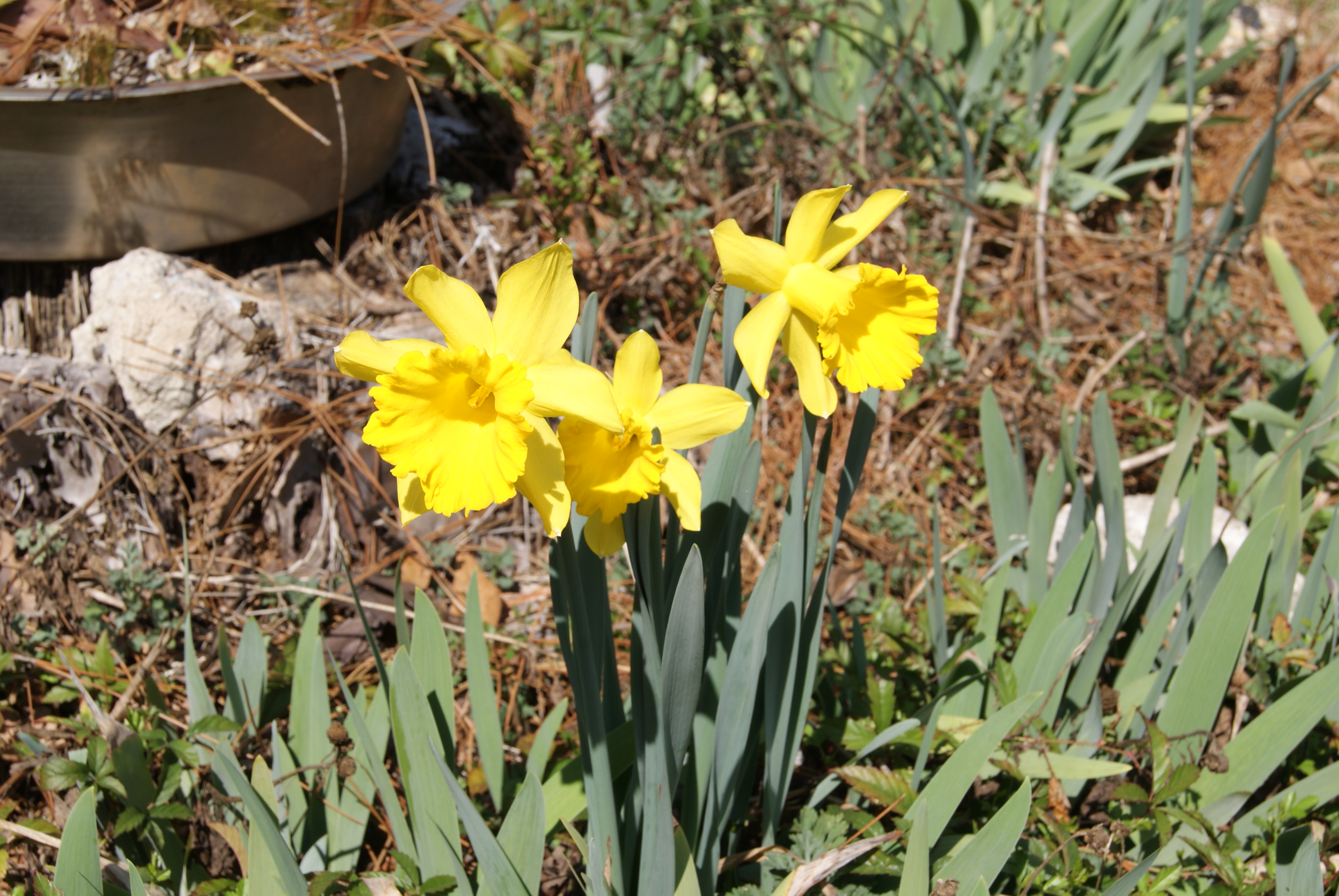
by Sheila Dunning | Mar 4, 2014
Few plants seem to signify the freshness of spring quite as well as daffodils. The name “daffodils” is derived from “addodell” a variant of Asphodel (a plant of the Asphodelus genus.) In historical documents and the common language of 16th century Europe, the term “daffodil” referred specifically to the wild daffodil, Narcissus pseudonarcissus.
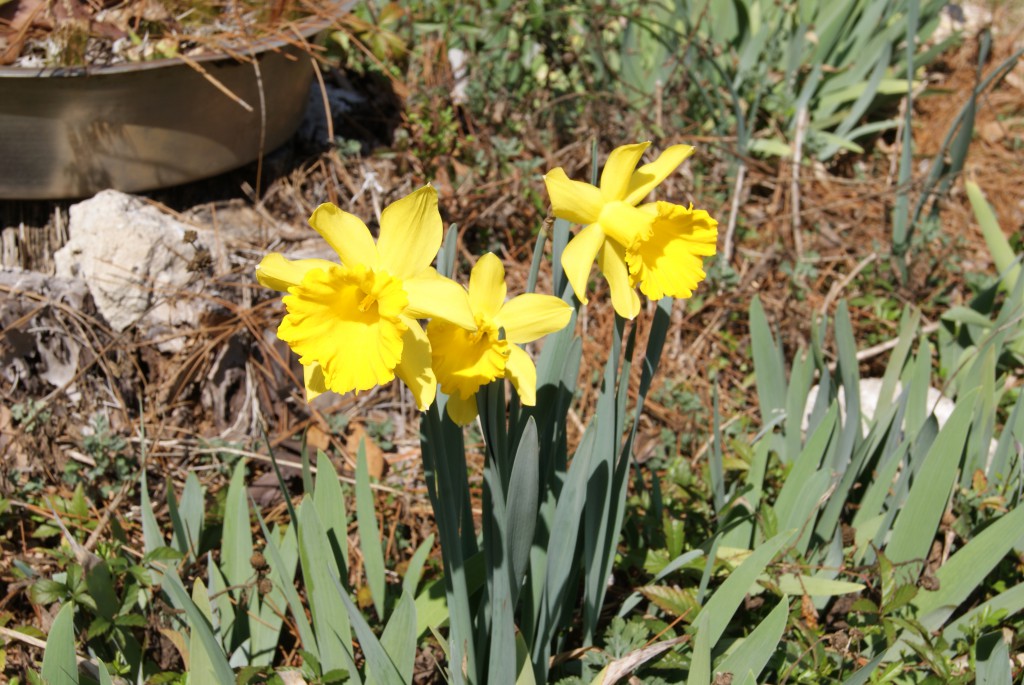
Daffodil in bloom. Image Credit Matthew Orwat
The derivation of the Latin narcissus is unknown. It is frequently linked to the Greek myth of Narcissus, who was rumored to be so obsessed with his own reflection that he died while gazing at himself in a pool of water. From the location of his death sprang the narcissus plant. Another Greek myth finds Persephone, daughter of the goddess Demeter, lured to her doom by the God Hades while picking a narcissus. Therefore the plant is perceived as a symbol of vanity in some Western culture.
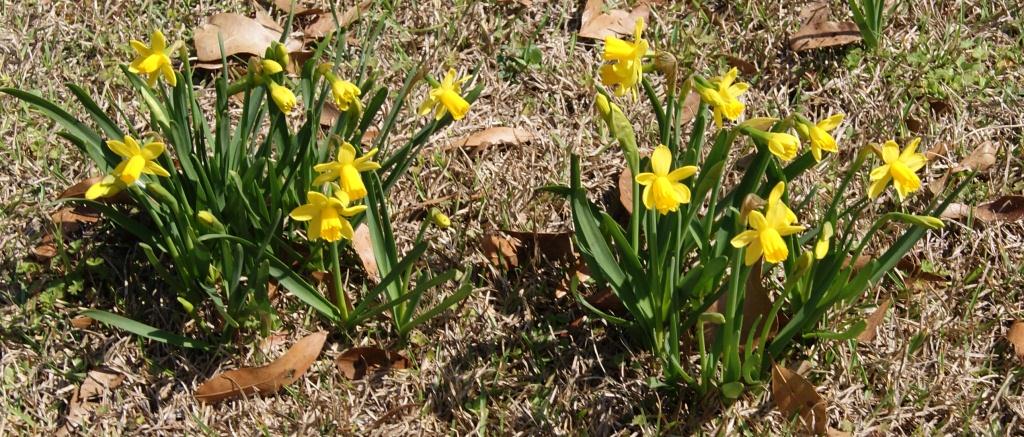
Daffidol cultivar ‘Tete-a-tete’ Image Credit Matthew Orwat
Others attribute the plants’ name to its narcotic properties. One translation of the Greek name is “I grow numb!” All narcissus species contain the alkaloid poison lycorine, mostly in the bulb but also in the leaves. Members of the Amaryllidaceae family contain unique types of alkaloids. They are responsible for the poisonous properties of a number of the species. Of the 200 different chemical compounds found in this plant family, at least 79 of them can be found in narcissus.
Daffodils are a popular potted plant for cut flowers, but also make attractive naturalized groundcovers in gardens and around trees, providing color from the end of winter through late spring. If the narcissus blooms on Chinese New Year, it is said to bring wealth and good fortune throughout the year. The flower color varies from white through pinks and yellows to deep reddish-orange with multiple petal forms. Hundreds of cultivars are available.
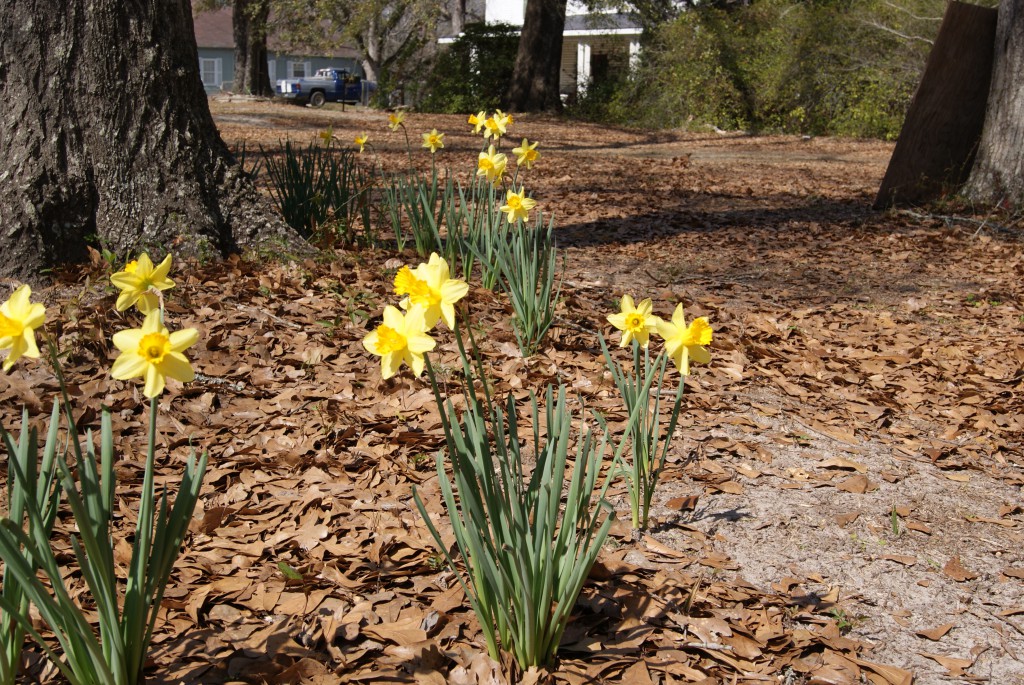
Daffodil bulbs under trees. Image credit Matthew Orwat
Planting dates vary according to geographical location, but bulbs are usually planted in the fall when the soil is cool. Daffodils grow well in full sun or light shade, with the blooms lasting longer when protected from the noon day sun. When selecting a location for planting, it should be noted that the individual flowers will face the sun.
Pre-chilled bulbs should be planted in 6-8” deep holes with a tablespoon of slow release fertilizer added to the soil directly under the bulb and with 4-5” of soil covering the bulb. Watering throughout the winter will be necessary if rains are infrequent. After flowering, the daffodils need to be fertilized and watering should continue. The foliage will naturally turn yellow and die as stored food is restored to the bulb.
Division, transplanting and collection for forcing potted plants can be done after all the foliage has declined. To force Daffodils to bloom at varied times in a container the dried bulbs will need to be stored at a 45° F temperature for 4-6 weeks prior to being placed in the sun to grow.
The bright, cheery Daffodil flowers are beginning to bloom now and will continue as Easter approaches, reminding us that spring really is coming.

 In 2014, a new law took effect requiring all commercial fertilizer applicators (for hire) to have a license. This law was passed in 2009 and took effect on January 1 of this year. A requirement that must be completed to obtain this license is to successfully complete a Green Industries Best Management Practices (GI-BMP) training class. One option to fulfill this requirement is to enroll in a GI-BMP class at the local county extension office. This training is provided by UF IFAS extension at various extension offices across Florida in both English and Spanish.
In 2014, a new law took effect requiring all commercial fertilizer applicators (for hire) to have a license. This law was passed in 2009 and took effect on January 1 of this year. A requirement that must be completed to obtain this license is to successfully complete a Green Industries Best Management Practices (GI-BMP) training class. One option to fulfill this requirement is to enroll in a GI-BMP class at the local county extension office. This training is provided by UF IFAS extension at various extension offices across Florida in both English and Spanish.




